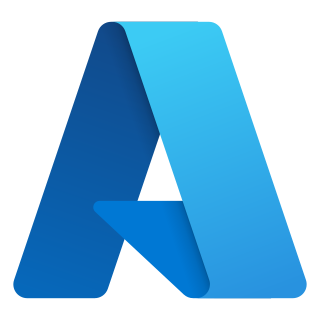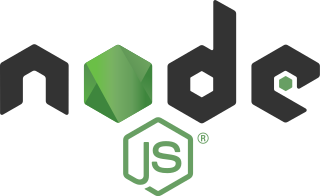Active Server Pages (ASP) is Microsoft's first server-side scripting language and engine for dynamic web pages.

Server-side scripting is a technique used in web development which involves employing scripts on a web server which produces a response customized for each user's (client's) request to the website. The alternative is for the web server itself to deliver a static web page. Scripts can be written in any of a number of server-side scripting languages that are available. Server-side scripting is distinguished from client-side scripting where embedded scripts, such as JavaScript, are run client-side in a web browser, but both techniques are often used together.

Internet Information Services (IIS) is an extensible web server created by Microsoft for use with the Windows NT family. IIS supports HTTP, HTTP/2, HTTPS, FTP, FTPS, SMTP and NNTP. It has been an integral part of the Windows NT family since Windows NT 4.0, though it may be absent from some editions, and is not active by default.
In computing, a solution stack or software stack is a set of software subsystems or components needed to create a complete platform such that no additional software is needed to support applications. Applications are said to "run on" or "run on top of" the resulting platform.

DNN Platform is a web content management system and web application framework based on the .NET Framework. It is open source and part of the .Net Foundation.
Zend Studio is a commercial, proprietary integrated development environment (IDE) for PHP developed by Zend Technologies, based on the PHP Development Tools (PDT) plugin for the Eclipse platform.
Google App Engine is a cloud computing platform as a service for developing and hosting web applications in Google-managed data centers. Applications are sandboxed and run across multiple servers. App Engine offers automatic scaling for web applications—as the number of requests increases for an application, App Engine automatically allocates more resources for the web application to handle the additional demand.

WaveMaker is an enterprise grade Java low code platform for building software applications and platforms. WaveMaker Inc. is headquartered in Mountain View, California. For enterprises, WaveMaker is a low code platform that aims to accelerate their app development and IT modernization efforts. For ISVs, it is a consumable low code component that can sit inside their product and offer customizations.

Microsoft Azure, often referred to as Azure, is a cloud computing platform operated by Microsoft that provides access, management, and development of applications and services via globally-distributed data centers. Microsoft Azure has multiple capabilities such as software as a service (SaaS), platform as a service (PaaS) and infrastructure as a service (IaaS) and supports many different programming languages, tools, and frameworks, including both Microsoft-specific and third-party software and systems.

Umbraco is an open-source content management system (CMS) platform for publishing content on the World Wide Web and intranets. It is written in C# and deployed on Microsoft based infrastructure. Since version 4.5, the whole system has been available under an MIT License.

C1 CMS is a free open source .NET-based web content management system.

Node.js is a cross-platform, open-source server environment that can run on Windows, Linux, Unix, macOS, and more. Node.js is a back-end JavaScript runtime environment, runs on the V8 JavaScript Engine, and executes JavaScript code outside a web browser.
WebORB is an integration server developed and maintained by Midnight Coders Incorporated. It is used in SOA/Rich Internet Application development projects to connect browser clients and mobile clients with backend services and databases. It combines technologies that provide developer productivity tools, AMF remoting, real time messaging, code-level security and real time streaming media.
Wakanda is a JavaScript platform to develop and run web or mobile apps.
ASP.NET Web Matrix, whose name was the inspiration for WebMatrix, was released in 2003 and later discontinued by Microsoft in favor of Web Developer Express, a free version of Visual Studio's web development functionality; Visual Studio is Microsoft's flagship IDE for all aspects of Visual Basic and C# coding, including ASP.NET development.
Azure Web Apps is a cloud computing based platform for hosting websites, created and operated by Microsoft. It is a platform as a service (PaaS) which allows publishing Web apps running on multiple frameworks and written in different programming languages, including Microsoft proprietary ones and 3rd party ones. Microsoft Azure Web Sites became available in its first preview version in June 2012, and an official version was announced in June 2013. Microsoft Azure Web Sites was originally named Windows Azure Web Sites, but was renamed as part of a re-branding move across Azure in March 2014. It was subsequently renamed "App Service" in March 2015.
Buddy is a web-based and self-hosted continuous integration and delivery software for Git developers that can be used to build, test and deploy web sites and applications with code from GitHub, Bitbucket and GitLab. It employs Docker containers with pre-installed languages and frameworks for builds, alongside DevOps, monitoring and notification actions.
ASP.NET Web Forms is a web application framework and one of several programming models supported by the Microsoft ASP.NET technology. Web Forms applications can be written in any programming language which supports the Common Language Runtime, such as C# or Visual Basic. The main building blocks of Web Forms pages are server controls, which are reusable components responsible for rendering HTML markup and responding to events. A technique called view state is used to persist the state of server controls between normally stateless HTTP requests.
Microsoft, a technology company historically known for its opposition to the open source software paradigm, turned to embrace the approach in the 2010s. From the 1970s through 2000s under CEOs Bill Gates and Steve Ballmer, Microsoft viewed the community creation and sharing of communal code, later to be known as free and open source software, as a threat to its business, and both executives spoke negatively against it. In the 2010s, as the industry turned towards cloud, embedded, and mobile computing—technologies powered by open source advances—CEO Satya Nadella led Microsoft towards open source adoption although Microsoft's traditional Windows business continued to grow throughout this period generating revenues of 26.8 billion in the third quarter of 2018, while Microsoft's Azure cloud revenues nearly doubled.







